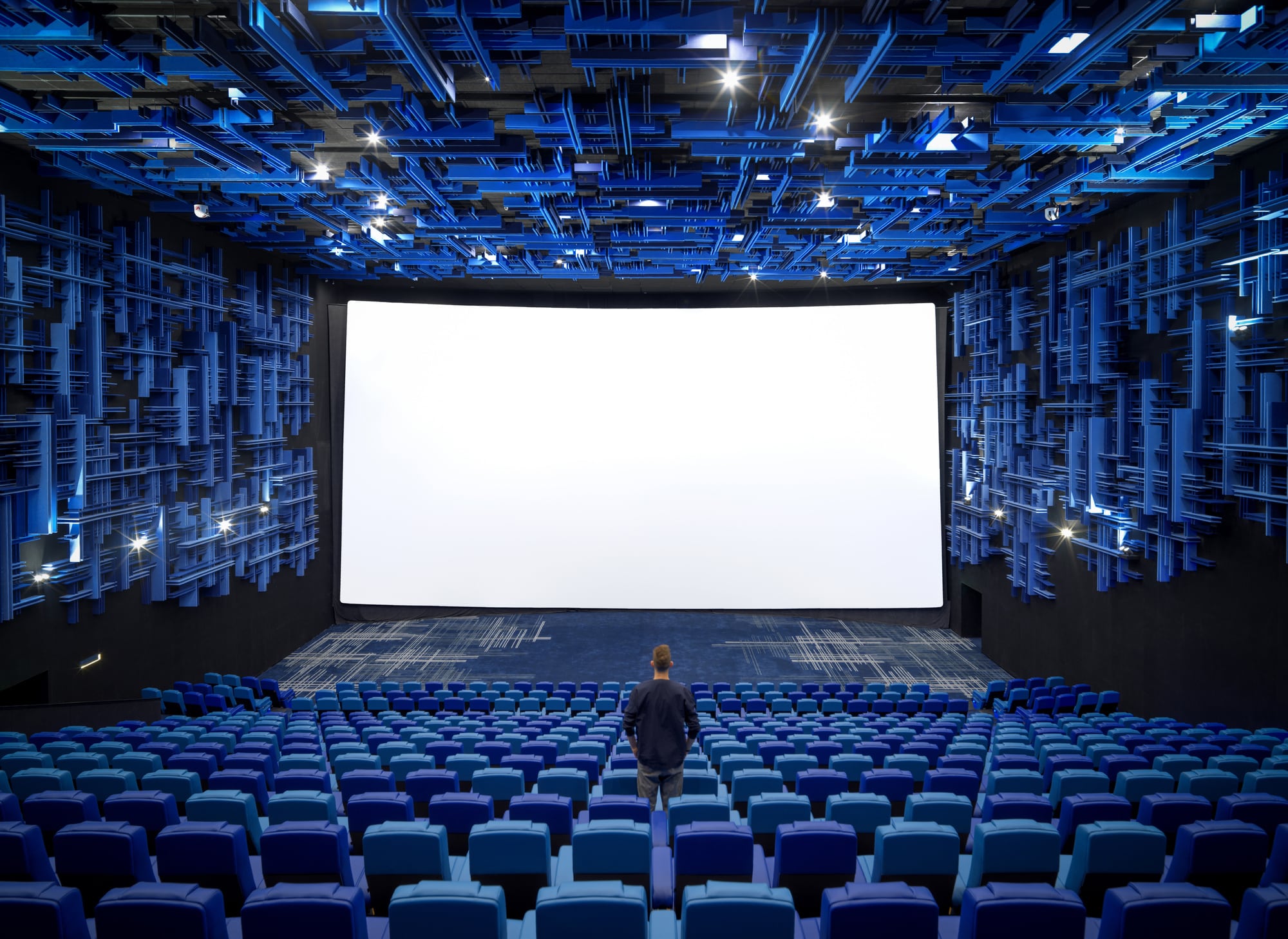SWOT Analysis for a Movie Theater (Example)

A SWOT analysis is crucial for developing a business plan for a movie theater. This analysis, which stands for Strengths, Weaknesses, Opportunities, and Threats, helps in understanding internal and external factors that can impact your business. Strengths and weaknesses are internal to the business, while opportunities and threats are external.
In this article, we will explore various examples of strengths, weaknesses, opportunities, and threats, aiding movie theater owners in incorporating these insights into their strategic business planning.

Strengths
Highlight the unique strengths that distinguish your movie theater, ensuring a competitive edge and fostering customer loyalty.
- Prime Location: A strategic location in a high-traffic area or near popular destinations can attract a consistent flow of moviegoers.
- Example: Utilize the theater’s location as a marketing highlight, emphasizing convenience and accessibility.
- State-of-the-Art Facilities: Offering cutting-edge audiovisual technology, comfortable seating, and premium amenities can enhance the overall movie experience.
- Example: Promote premium features like IMAX screens, luxury seating, or advanced sound systems to attract patrons seeking top-tier cinematic experiences.
- Diverse Movie Selection: Providing a wide array of movies across various genres and languages caters to diverse audience preferences.
- Example: Advertise a diverse film lineup through online platforms and promotional materials to appeal to different demographics.
- Membership Programs and Loyalty Offers: Implementing loyalty programs or membership discounts encourages repeat visits and builds a loyal customer base.
- Example: Launch exclusive membership benefits such as discounted tickets, free snacks, or early screenings to incentivize frequent moviegoers.
Weaknesses
Address weaknesses to fortify and improve the operational efficiency of your movie theater for sustainable success.
- Seasonal Fluctuations: Seasonal variations in movie releases or audience turnout can impact revenue streams.
- Example: Introduce alternate revenue streams during slower periods, such as hosting special events, film festivals, or themed screenings.
- Dependence on Studio Releases: Relying solely on major studio releases may limit flexibility in programming and audience appeal.
- Example: Explore partnerships with independent filmmakers or host special screenings of cult classics to diversify the movie selection.
- Operational Costs: High operational expenses, including rent, utilities, and licensing fees, can affect profitability.
- Example: Optimize operational efficiency by implementing energy-saving measures or negotiating better supplier deals to reduce costs.
- Competition from Streaming Services: The increasing popularity of streaming platforms poses a challenge by providing convenient at-home entertainment options.
- Example: Offer unique experiences like premiere nights, live events, or interactive screenings to attract audiences seeking communal movie experiences.
Opportunities
Seize opportunities to expand, innovate, and diversify offerings within your movie theater to cater to evolving audience preferences.
- Enhanced In-Theater Experience: Innovate by introducing immersive technologies such as virtual reality or interactive screenings.
- Example: Collaborate with technology companies to introduce VR experiences or interactive screenings for select movies.
- Partnerships with Local Businesses: Collaborating with nearby restaurants or businesses for joint promotions or package deals can attract more customers.
- Example: Offer dinner-and-movie packages in collaboration with nearby restaurants to create a complete entertainment experience.
- Special Events and Niche Screenings: Hosting themed events, film festivals, or niche screenings can attract niche audiences and create buzz.
- Example: Organize classic movie nights, cosplay events, or director retrospectives to cater to specific audience interests.
- Targeted Marketing Strategies: Utilize data analytics and targeted marketing campaigns to reach specific demographics or communities.
- Example: Utilize social media advertising and tailored promotions to reach younger audiences or specific interest groups.
Threats
Prepare and strategize against potential threats to ensure the resilience and continued success of your movie theater amidst industry challenges.
- Changing Consumer Habits: Evolving consumer preferences and habits, such as binge-watching at home, may decrease theater attendance.
- Example: Offer exclusive content or partnerships with studios for early releases to incentivize theater attendance.
- Piracy and Illegal Streaming: Rampant piracy and illegal streaming platforms can impact box office revenues.
- Example: Implement strict anti-piracy measures and educate audiences about the negative impacts of piracy on the film industry.
- Economic Downturns: Economic recessions or downturns may result in reduced discretionary spending on entertainment.
- Example: Introduce flexible ticket pricing, discounts for bulk purchases, or loyalty incentives during economic uncertainties.
- Regulatory Changes and Licensing Costs: Changes in licensing agreements or stringent regulations can affect film acquisition and screening costs.
- Example: Stay updated on industry regulations and negotiate favorable licensing terms to mitigate potential cost increases.





